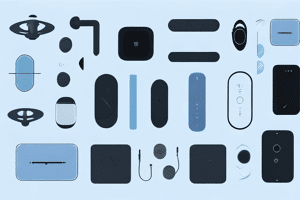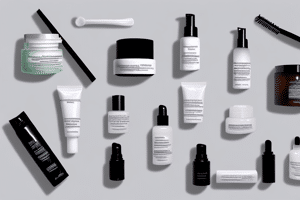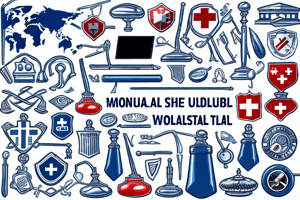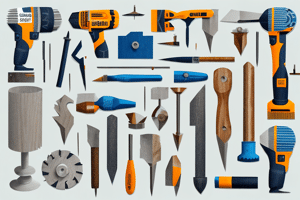UPDATED: March 17, 2024
Men's fashion has come a long way over the years, evolving and adapting with every passing decade. From the iconic styles of the roaring 20s to the rebellious spirit of the 1960s, each era has left its mark on how men dress. In this article, we'll take a journey through time, exploring the defining fashion trends that have shaped men's style throughout history.
The Roaring 20s: The Birth of Modern Men's Fashion
When we think of the 1920s, a few images immediately come to mind – the glamour of the jazz age, the elegance of flapper girls, and the emergence of modern men's fashion. This era was all about breaking free from the constraints of the past, and the fashion reflected this newfound freedom.
The 1920s marked a significant shift in men's fashion, as societal norms loosened, and self-expression through clothing became more prevalent. Men embraced a more relaxed and casual approach to dressing, moving away from the stiff and formal attire of previous decades.
The Influence of Jazz and the Flapper Era
The roaring 20s were characterized by a desire for change and a shift towards a more carefree lifestyle. Jazz music swept the nation, inspiring a vibrant and energetic fashion scene. Men began to favor looser-fitting suits with wider legs and high-waisted trousers. This, coupled with the popularity of the Charleston dance and the rise of the speakeasies, created a fashion revolution.
The influence of the flapper era cannot be understated in shaping men's fashion during the 1920s. Flapper girls, known for their rebellious spirit and love for all things modern, pushed boundaries with their bold fashion choices. Men took note and started incorporating elements of this daring style into their own wardrobes, embracing a more daring and adventurous approach to dressing.
The Rise of the Three-Piece Suit
As the 1920s progressed, the three-piece suit became a staple in every man's wardrobe. Made famous by dapper gentlemen like the iconic Jay Gatsby, these suits featured wide lapels, contrasting fabrics, and bold patterns. The three-piece suit exuded sophistication and offered a stylish alternative to the more traditional styles of the past.
Men of the 1920s embraced a newfound sense of sartorial freedom, experimenting with colors, textures, and accessories to create unique and personalized looks. The three-piece suit, once reserved for formal occasions, became a versatile ensemble that could be dressed up or down depending on the occasion. This era marked a turning point in men's fashion, setting the stage for the modern styles we see today.
The 1930s: The Great Depression and Its Impact on Men's Fashion
The 1930s was a challenging period for America, with the Great Depression casting a shadow over the country. As people faced economic hardship, fashion took a more practical turn, reflecting the need for durability and functionality.
Despite the economic challenges of the era, the 1930s witnessed a remarkable evolution in men's fashion that mirrored the societal shifts of the time. The clothing industry adapted to the changing circumstances by focusing on creating garments that were not only stylish but also long-lasting and versatile.
The Shift Towards Practicality and Durability
During this time, men's fashion became more understated and subdued. Single-breasted suits with narrow lapels and minimalistic details were the norm. Fabrics were chosen for their durability, and muted colors like browns, grays, and blues dominated the scene. Comfort and practicality took precedence over extravagance.
In addition to the emphasis on practicality, the 1930s also saw a resurgence of interest in traditional craftsmanship. Tailors and designers paid meticulous attention to the construction of garments, ensuring that every piece was not only fashionable but also well-made. This focus on quality craftsmanship laid the foundation for the enduring appeal of classic menswear styles.
The Emergence of the Double-Breasted Suit
While practicality was essential, men still sought ways to stand out from the crowd. The double-breasted suit emerged as a symbol of prestige and elegance. Men embraced its bold, commanding silhouette, featuring wide peak lapels and padded shoulders. This style showcased a man's confidence and sartorial prowess.
The popularity of the double-breasted suit during the 1930s can be attributed to its ability to exude sophistication while maintaining a sense of practicality. The structured design of the suit not only accentuated the wearer's physique but also provided an air of authority and refinement. It became a staple in the wardrobes of well-dressed men who valued both style and substance.
The 1940s: War-Time Fashion and the Post-War Boom
The 1940s were marked by the chaos of World War II and its aftermath. As men went off to fight, fashion took a back seat to practicality. However, once the war ended, a new sense of optimism and celebration set the stage for a fashion revolution.
Despite the challenges of wartime, fashion continued to evolve, adapting to the needs and realities of the era. Women's clothing, in particular, saw a shift towards more utilitarian designs, with practical features such as pockets and adjustable closures becoming increasingly common. The iconic "Rosie the Riveter" look, with its durable overalls and bandanas, symbolized the strength and resilience of women on the home front.
Military Influence on Men's Clothing
During the war, uniforms played a significant role in shaping men's fashion. Military-inspired clothing, such as bomber jackets and cargo pants, made their way into civilian wardrobes. These functional garments not only provided comfort and durability but also gave a sense of patriotism and solidarity.
As men returned from the front lines, they brought with them a new perspective on style. The influence of military tailoring could be seen in the sharp lines and structured silhouettes of men's suits, reflecting a sense of discipline and order that resonated in a world recovering from the chaos of war.
The Introduction of Casual Wear
After the war, men embraced a more relaxed approach to fashion. The introduction of casual wear, including polo shirts, chinos, and loafers, allowed men to express themselves in a more laid-back manner. This shift reflected a desire for comfort and simplicity, mirroring the newfound peace and prosperity of the post-war era.
With the rise of leisure time and recreational activities, men sought clothing that was both stylish and functional. The popularity of Hawaiian shirts and Bermuda shorts reflected a growing interest in travel and outdoor pursuits, as well as a desire to break free from the constraints of traditional attire. This era marked the beginning of a more diverse and inclusive approach to men's fashion, paving the way for the sartorial experimentation of the decades to come.
The 1950s: The Golden Age of Men's Fashion
The 1950s is often regarded as the golden age of men's fashion. With the war behind them, men eagerly embraced an era of prosperity and a renewed focus on style. Classic looks dominated the scene, representing timeless elegance and sophistication.
This era was not only defined by the fashion trends but also by the grooming standards that men adhered to. Slicked-back hair, clean-shaven faces, and polished shoes were essential components of a man's overall look. Attention to detail was key, with men taking pride in their appearance and grooming routines.
The Popularity of the Grey Flannel Suit
One of the iconic fashion trends of the 1950s was the grey flannel suit. Worn by business professionals and Hollywood stars alike, this versatile ensemble exuded sophistication and refinement. The grey flannel suit became a symbol of success and was favored for its versatility, allowing men to effortlessly transition from the office to social gatherings.
Accessories played a crucial role in completing the look of the grey flannel suit. Men often paired it with a fedora hat, leather briefcase, and a classic watch to add a touch of elegance and charm. The attention to detail in accessorizing showcased a man's sense of style and sophistication.
The Birth of Teen Fashion
In addition to the polished styles of the adults, the 1950s also saw the birth of teen fashion. Inspired by rebel icons like James Dean and Elvis Presley, young men embraced a more casual and rebellious look. Denim jeans, leather jackets, and white t-shirts paired with loafers or sneakers became the uniform of the cool teenage rebels.
This shift in fashion reflected the changing attitudes of the youth during the post-war period. Teenagers sought to break away from the traditional norms and express their individuality through their clothing choices. The emergence of teen fashion marked a significant cultural shift in the fashion landscape, paving the way for future generations to explore and redefine style boundaries.
The 1960s: The Decade of Change
The 1960s was a decade of immense social and cultural change, and the fashion of the time reflected this upheaval. Traditional norms were challenged, giving way to new and daring styles that pushed boundaries.
This era was not only defined by its fashion revolution but also by its significant political and social movements. The civil rights movement, the anti-war protests, and the fight for gender equality all played a crucial role in shaping the spirit of the 1960s. These movements inspired a sense of activism and empowerment that transcended into the world of fashion, influencing designers to create pieces that made bold statements and challenged the status quo.
The Influence of the British Invasion
The arrival of British bands like The Beatles and The Rolling Stones had a profound impact on men's fashion. The clean-cut looks of the 1950s were swiftly replaced by a more experimental and free-spirited approach. The mod style, characterized by tailored suits, slim-fitting shirts, and Chelsea boots, took center stage.
British musicians not only brought a new sound to the American music scene but also introduced a fresh aesthetic that captivated the youth culture. The fusion of British and American styles gave birth to a unique blend of sophistication and rebellion, setting the tone for a decade of sartorial innovation and self-expression.
The Rise of Counter-Culture Styles
The 1960s also saw the rise of counter-culture movements, such as the hippie and bohemian styles. Men embraced colorful patterns, flowing fabrics, and unconventional accessories. This anti-establishment fashion represented a rejection of societal norms and a celebration of individuality and freedom.
Hippie fashion, in particular, became a symbol of peace, love, and unity. Tie-dye shirts, bell-bottom pants, and fringe jackets became staples in the wardrobes of those who sought to challenge mainstream ideology through their clothing choices. The bohemian look, with its focus on natural materials and eclectic patterns, offered a bohemian lifestyle that embraced creativity and nonconformity.
The 1970s: The Era of Disco and Punk
The 1970s witnessed the clash of different subcultures, with disco and punk emerging as dominant forces. Fashion became a means of self-expression, allowing men to align themselves with their chosen musical tribe.
As the decade unfolded, the cultural landscape was transformed by the pulsating beats of disco music and the raw energy of punk rock. These musical genres not only provided a soundtrack for the era but also influenced every aspect of society, including men's fashion. The dichotomy between the glitzy, glamorous world of disco and the gritty, rebellious ethos of punk created a dynamic tension that played out in the clothing choices of men across the globe.
The Impact of Music on Men's Fashion
Disco fever swept the nation, influencing men's fashion with its flamboyant and hedonistic style. Bright colors, wide lapels, and exaggerated collars became the hallmark of disco fashion. Men embraced form-fitting shirts, bell-bottom pants, and platform shoes, channeling the suave sophistication of icons like John Travolta in "Saturday Night Fever." In contrast, the punk movement rebelled against the mainstream, embracing ripped jeans, leather jackets, and safety pins as symbols of their nonconformity. The DIY ethos of punk fashion encouraged men to customize their clothing, expressing their individuality through patches, studs, and unconventional accessories.
The Emergence of Designer Jeans
The 1970s also saw the emergence of designer jeans as a fashion staple. Previously seen as workwear, jeans quickly became fashionable and sought after. Brands like Levi's and Calvin Klein embraced this trend, offering various cuts and styles to cater to different tastes. Designer jeans became a symbol of casual chic, blurring the lines between high fashion and everyday attire. Men embraced the versatility and durability of denim, incorporating it into their wardrobes in innovative ways. From flared jeans to straight-leg cuts, denim became a canvas for self-expression, reflecting the shifting attitudes towards fashion and masculinity in the 1970s.
The 1980s: The Age of Excess
The 1980s was a decade characterized by excess and extravagance. Corporate culture reached its peak, influencing men's fashion with its power-driven aesthetic. The era was defined by bold choices and a larger-than-life attitude that transcended into every aspect of society, from fashion to music and beyond.
The Power Suit Phenomenon
The 1980s were all about power dressing. Men's fashion became synonymous with sharp, tailored suits in bold colors such as navy blue and charcoal gray. Shoulder pads added an extra boost of confidence, while wide ties and statement accessories completed the power suit ensemble. This bold style represented success and ambition. The power suit was not just an outfit; it was a symbol of authority and influence, worn by businessmen and celebrities alike to convey strength and dominance in a competitive world.
The Casual Friday Movement
While power suits dominated the weekdays, casual wear started to gain traction with the introduction of Casual Friday. This trend allowed men to dress down comfortably in the office, opting for polo shirts, khakis, and loafers. Casual Friday became a welcome respite from the formalities of the rest of the week. It was a chance for individuals to showcase their personal style and creativity in a more relaxed setting, breaking away from the rigid expectations of traditional corporate attire.
As the 1980s progressed, fashion trends continued to evolve, reflecting the dynamic and ever-changing landscape of the era. From the rise of iconic pop culture figures like Madonna and Michael Jackson to the emergence of innovative technologies like the personal computer, the decade was a melting pot of influences that shaped not only the way people dressed but also how they perceived themselves and the world around them.
The 1990s: The Decade of Anti-Fashion
The 1990s was a decade defined by rebellion against traditional fashion norms. Anti-fashion movements and subcultures set the stage for a fashion revolution.
As the 1990s progressed, the anti-fashion sentiment continued to grow, with individuals seeking to express their individuality and reject mainstream trends. This era saw a rise in DIY fashion, with people customizing their clothing to reflect their unique personalities. From hand-painted jackets to homemade accessories, self-expression through fashion became a powerful form of rebellion.
The Grunge Movement and Its Influence
Grunge fashion emerged as a response to the polished and glitzy styles of the 1980s. Inspired by the music of bands like Nirvana and Pearl Jam, men embraced a more relaxed and alternative look. Distressed denim, flannel shirts, and combat boots became the uniform of the grunge movement, challenging societal beauty ideals.
One of the defining characteristics of grunge fashion was its emphasis on comfort and practicality over glamour. The unkempt appearance and mismatched layers of clothing represented a rejection of the fashion industry's emphasis on perfection and luxury. This raw and unrefined aesthetic resonated with a generation disillusioned by materialism and excess.
The Rise of Streetwear
In urban areas, streetwear gained popularity among young men. Influenced by hip-hop culture and brands like FUBU and Phat Farm, streetwear represented a fusion of sportswear and casual fashion. Oversized t-shirts, baggy jeans, and sneakers became the epitome of cool and laid-back style.
Streetwear not only revolutionized fashion but also blurred the lines between high and low culture. The appropriation of elements from skateboard culture and graffiti art into mainstream fashion challenged traditional notions of what constituted "acceptable" clothing. This democratization of style allowed individuals from diverse backgrounds to participate in shaping the cultural landscape through their fashion choices.
The 2000s: The New Millennium's Fashion Trends
As the new millennium began, men's fashion entered a more eclectic phase, influenced by a combination of past trends and emerging styles.
The 2000s were a time of sartorial experimentation and boundary-pushing in men's fashion. Alongside the resurgence of classic styles, there was a notable influx of bold and daring choices that challenged traditional norms. This juxtaposition of old and new created a dynamic and diverse fashion landscape that catered to a wide range of tastes and preferences.
The Return of the Suit
After years of casual attire dominating the scene, the suit made a comeback in the 2000s. Slimmer silhouettes, fitted shirts, and narrower lapels redefined the classic suit. Men embraced this refined and contemporary look, elevating the suit to a symbol of modern elegance.
Furthermore, the revival of the suit in the 2000s was not limited to traditional colors and fabrics. Designers began experimenting with unconventional patterns, textures, and colors, injecting a sense of playfulness and individuality into this timeless garment. This modern twist on a classic piece reflected the evolving attitudes towards menswear and the desire for self-expression through clothing.
The Influence of Hip-Hop Culture
Hip-hop culture continued to shape men's fashion in the early 2000s. Rappers like Jay-Z and Kanye West brought a new level of sophistication to streetwear, incorporating luxury brands and tailored pieces into their wardrobes. This fusion of high fashion and urban style created a unique and influential trend.
Moreover, the impact of hip-hop culture extended beyond clothing choices; it influenced grooming trends, accessory preferences, and even the way men carried themselves. The emphasis on confidence, individuality, and self-assuredness that permeated hip-hop culture had a profound effect on the way men approached fashion and style in the 2000s. This era marked a shift towards a more inclusive and diverse representation of masculinity in the fashion industry, breaking away from traditional stereotypes and embracing a broader spectrum of identities.
The 2010s: The Decade of Individualism
In the era of social media and constant connectivity, men's fashion became more diverse and individualistic than ever before. Personal style took center stage, and self-expression became a driving force.
The Impact of Social Media on Men's Fashion
With the rise of platforms like Instagram and YouTube, men had more access to fashion inspiration and style influencers. This led to a greater emphasis on personal style and experimentation. Men started to mix patterns, combine different genres of fashion, and embrace unisex clothing, blurring traditional gender boundaries.
The Rise of Athleisure
The 2010s also saw the rise of athleisure – a combination of athletic and leisurewear. Men embraced the comfort and functionality of athletic apparel, incorporating it into their everyday fashion. Joggers, sneakers, and performance fabrics became the go-to choice for both casual and dressed-up looks.
As we reflect on the evolution of men's fashion, it's clear that style is a powerful form of self-expression. From the glamourous jazz age to the rebellious grunge movement to the individualistic trends of today, men have always found ways to leave their mark on the world through the clothes they wear. So go ahead, embrace your personal style and let your fashion journey continue to evolve with each passing decade.




